I first met Kuntal two years back, when he visited our new venture Imagine cafe – Mumbai’s first vegan restaurant. And after that first ever conversation with him itself, I had developed an immense respect for him as a human being.

Fast forward to 2 years later, I started writing about veganism with an intent to educate people about the horrors of the livestock industry and benefits of a vegan diet. I asked him if he could give me a quote for one of my articles, he said he was always happy to collaborate and will write back to me with his answers. But I was completely shocked, when, 24 hours later, he wrote back to me in great detail and told me I could use the answers however I saw fit. I could sense his emotions and passion through the mail. That is when I decided that the story in this email conversation has to be out there for people to read, a quote is just not enough!
For those who don’t know him –
Kuntal Joisher, 40, from Mumbai is the man who became the first vegan to climb the Mt. Everest from north and south sides against all odds. He not only did it on a vegan diet but used only vegan gear including a one-piece synthetic suit made completely from animal-free material made by ‘Save the duck’, as well as mittens and gloves constructed devoid of down or leather . Amazing isn’t it?
So here it is!

At what point in your life did you decide to go vegan?What/who was your inspiration?
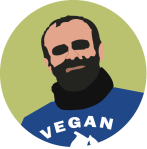
As a part of my upbringing I was taught and always believed that, ‘Animals are sentient and emotional beings with individual characters, and have as much right to live freely and happily as much as we do’. And so consequently I grew up a vegetarian. Then I moved to the United States in Aug 2001 to pursue my Masters degree. And then sometime in late 2002, my room-mate at the university exposed me to the horrors of the eggs, dairy, and leather industry. After that conversation, I connected the dots that a piece of meat, a cake made with eggs, a glass of milk, a block of cheese, or a leather belt, or the Down jacket I was wearing – are all the same and come from abused animals.
That is the first time I actually thought about where the milk we consume comes from? Cows are impregnated over and over, their babies stolen from them and slaughtered for meat just so that you can have their milk! Or think about eggs – male chicks are worthless to the egg industry, and so every year, millions of them are suffocated or thrown into high-speed grinders while they are still alive. The birds are crammed so closely together that they are forced to urinate and defecate on one another. Disease runs rampant in the filthy, cramped sheds, and many birds die! What about that leather belt or feather jacket? These are made from the skins of cattle, horses, sheep, lambs, goats, pigs, elephants, snakes, and feathers of chickens, geese etc who are all slaughtered so that you can look good.
Every animal wants to live, just as much as we do. Every animal loves, just as we do and every animal feels the same amount of pain as we do. I learnt the true meaning of words empathy and compassion the day I decided to turn Vegan, some 17 years ago. It was the start of a new journey – like a rebirth. And it was the best decision that I have taken in my entire life.
This was not the end. I learnt more shocking facts. Animals raised for meat, eggs and milk – the livestock industry – generates 14.5% of global greenhouse gas emissions, uses up about 70% of agricultural land, and is one of the leading causes of deforestation, biodiversity loss, and water pollution. After knowing all this, I lost my sleep and peace of mind. I could not reconcile with the fact that as a Vegetarian I continued contributing to immense amounts of animal abuse, cruelty and slaughter, as well as destruction of the planet, and so I had to take a stand. That is the moment when I turned Vegan.

How did people in the mountaineering industry react when they came to know that you are planning to climb the Everest as a vegan?

Sometime in 2009, I realized that climbing Mt. Everest is the biggest dream of my life. I told myself that I am going to climb Everest as a Vegan, or not climb it at all. Most people in the high altitude mountaineering world thought I was crazy, as the recommended diet for extreme climbing expeditions includes salami, spam, cheese, processed meats, eggs, and dairy. I can’t eat any of these high-fat high-protein animal products. However, my diet has never been an issue. I’ve now been part of over 25 serious Himalayan climbing expeditions, and I’ve never had any problems being a vegan, even on this last climb to the top of Mt. Everest from the China side in May 2019!

What is your diet like while training?
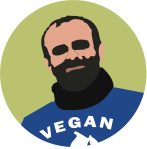
‘Whole foods plant based diet’. Low fat, High carbohydrates. I love eating fruits, vegetables, beans, lentils, whole grains, dates, nuts / seeds and this diet has done wonders for me. I recover much quicker even when I do some of the most excruciating workouts (example – a 20 hour steep hike in the local mountains). On the other hand, every-time I eat unhealthy food such as deep fried stuff / white refined flour, I’ve realized that my recovery becomes slower. One’s body tells it what it likes. And my body likes a whole foods vegan diet. Some of my favorite foods are fruits such as Banana, Mango, Grapes, and power-packed dried Dates/Raisins/Figs, and I can not forget — the Oatmeal made with either water or soy milk (my favorite breakfast of all!).

Isn’t it hard trying to find vegan food while on an expedition?
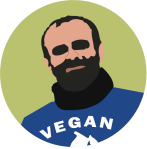
My diet while on climbing expeditions is very different. At higher altitude the calorie requirements of a human body are dramatically different compared to while at sea-level. At Base camp, which is at 18,000 feet a climbers calorie requirements could easily be around 4000 calories a day, and this number would easily go upto 8-9000 calories at 25,000 feet, and a climber burns through about 15,000 calories on a typical Everest 20 hour round trip to the summit. While on an expedition, for me as long as the food is Vegan, I don’t care whether it’s healthy. I’ll eat it as I need the calories. For example a small bottle of 250 ml coke = 100 calories (99% simple carbs). A single oreo cookie = 45 calories, and so about 20 of them would be around 900 calories! These are all calories – Vegan calories, and they taste great, and at 23,000 feet where most people can’t eat anything, I would rather eat these and get my calories requirements met.
Regarding my diet while I’m climbing – a lot depends on where I’m climbing. If it’s the Himalaya, then most of the local food tends to be Vegetarian, and easy to Veganize. The food spread typically consists of Vegetable stews / curries, fruits, lentils, beans, soups, wheat bread, rice, potatoes, pasta, noodles etc. So on my climbs in the Himalaya, I stick to eating the local cuisine. At the same time I do carry comfort food from home which tends to be trail mix of dried fruits and nuts, nutrition bars made out of dates and nuts, and a few local snacks even if they are unhealthy (after all on the mountain – calories are calories – you need them!). Veganizing the climbing expedition food menu isn’t that difficult. I’ve successfully worked with kitchen staff of expedition operators in the high Himalaya in India & Nepal, and even a remote region such as Northern Ice-cap in Chilean Patagonia.
For the Everest/Lhotse climb, at the Base camp (18,000 feet) / Camp two (21,500 feet) – I ate pretty much everything fresh right from beaten rice, to semolina / oat porridge, deep fried Indian bread and curry, Tibetan bread, pancakes, Lentils and rice, pasta, french fries, burgers, and several Indian food items – all Vegan of course. Our awesome cooks Ngima Tamang and Anup Rai even baked us a Vegan cake! Beyond Camp two, I survived on mainly few things: Electrolyte & Energy powders, Freeze dried meals, Instant Soymilk oatmeal, Oreo cookies, Dried dates/figs, Dried fruit such as Kiwi, Pineapple, Papaya, Nuts – almonds & cashews, and some Indian comfort foods.

Do you think you had an advantage over other climbers or that you were compromising and taking a bigger risk by trying to climb on a vegan diet?

For me, when I shifted to eating a healthy vegan diet, I instantly had performance benefits during my training at sea-level. My recovery time improved, and I could train harder and harder for the big mountain climbs!
Another advantage I have over other climbers and that I have now been noticing for the past few expeditions is that I never catch a stomach infection. Most mountaineers at some point or the other during their expeditions catch a stomach bug that causes intense stomach pain, loose motions and these climbers tend to go weak and some of them never recover and go home. In my opinion most of these stomach issues are caused due to either lactose intolerance, or on the other hand infected meat. As a Vegan, I don’t eat any living beings or drink their by-products, which means that chances of catching infections is almost nonexistent. I have also recommended to my co-climbers to go Vegan when they catch infection and it has worked wonders with most of them!
But one of the biggest benefits and something that is not very obvious or tangible, is the amount of mental peace and focus that I derived after making this lifestyle change. Knowing that no animal or a sentient being died for me to go pursue my dreams gives me full peace of mind to go focus and achieve my dreams. If you are not already sold on the health benefits of this lifestyle, then I say go Vegan for the mental edge that this lifestyle gives you! And having climbed Everest and Lhotse, I know that in the end it’s all about your mental fitness and readiness.

And now, a question that every vegan is always asked- ‘But what about protein?‘
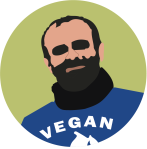
Protein is an essential nutrient, absolutely critical not just in building and repairing muscle tissue, but in the maintenance of a wide array of important bodily functions. Your body contains thousands of different proteins that serve different functions, all made from amino acids. It’s the arrangement of these amino acids that determines the type and function of a protein. There are 20 different amino acids that combine to form proteins, and although your body requires all of them, you only have the ability to make 11 of them. These are termed non-essential amino acids. The other nine—those you can’t make—are termed essential amino acids, and must be obtained from the diet. But these nine essential amino acids are hardly the exclusive domain of the animal kingdom. In fact, they’re originally synthesized by plants and are found in meat and dairy products only because these animals have eaten plants. Basically all animal protein is essentially recycled plant protein at the end of the day.
While certain foods—like soy, buckwheat etc — contain all nine essential amino acids in roughly equal amounts, other plant proteins have a lower amount of at least one essential amino acid. But that’s not a problem because your body does the work of making complete proteins for you. Your body creates a “pool” of amino acids from the food you eat throughout the day. So, if you eat oats in the morning, a salad at lunch, and legumes for dinner, your body will pool together all the essential amino acids from these foods and use them as needed to make proteins. This means you don’t have to worry about getting all the essential amino acids at any given meal. As long as you are eating an assortment of plant foods over the course of a day, your body will take care of the rest.

A plant based diet is devoid of Vitamin B12 and Vitamin D3? How to deal with that?
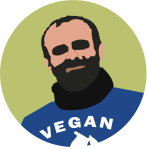
Now let’s see how a non Vegan gets these. The animals that are raised for dairy and meat are injected with high doses of Vitamin B12. These animals are then consumed by humans, who thus get Vitamin B12. To me this seems like a highly inefficient and a far more unnatural process. Wouldn’t it be smart to just inject yourself with Vitamin B12 or eat a tablet? Save the animal life, and make the entire process more sustainable? And similarly with Vitamin D3. So no I don’t think Veganism is unnatural or unbalanced, on the contrary it’s the most natural and balanced diet that a human can consume – a mix of vegetables, fruits, legumes, whole grains, nuts and seeds. Good for our health, the animals and the planet. Win win for everyone involved.

Would you like to give some pointer/tips for folks wanting to switch to a vegan lifestyle?

Start out by replacing your dairy and meat by Vegan alternatives. For example, you can easily replace your milk with a plant based version such as Soy milk, Almond milk, Oat milk which these days is readily available in most grocery stores across India. Several companies such as Sofit, So Good, Soyfit, Good Mylk, Raw Pressery, Urban Platter etc provide plant based milk options. Then you can easily replace your meat with a plant based alternative. There’s Good Dot / Vezlay Vegan meat which is today available across India, or the Nutrella soya chunks that are available at almost every grocery store across India. Several companies offer Vegan versions of cheese, dahi, butter, ghee, sweets. These would be great stop gap arrangements as you transition to a diet filled with more vegetables, fruits, legumes and grains combined with occasional servings of vegan dairy and meat alternatives.
- Another idea would be to gradually cut down one thing after another. For example, you can take a 21 day challenge of completely cutting out lets say “eating chicken”. Research shows it takes about 21 days to form a habit, and so you can slowly take on these challenges and start cutting out animal products from your life.
- Also during the journey there is a good chance that you will face cravings to eat animal products. Try and begin by eating vegan alternatives – in today’s world everything from Vegan butter to cheese to ice cream to Shrikhand etc is available. However, if you can’t find it and you go ahead and eat some non vegan stuff, don’t beat up yourself over it. It’s not the end of the world. The key here is to focus and stay committed to the path of transitioning to a Vegan. There’s not many people in the world who have found success without failing. So go easy on yourself.
- Find other Vegans in your area, in your city, meet with them, attend the potlucks, learn Vegan recipes, discover Vegan and Vegan friendly restaurants, goto Vegan movie screenings, participate in a Vegan outreaches, follow and join various social media groups on Facebook and instagram to learn more about Veganism. Many people try to make the transition into the world of veganism alone, but if you have a group, community, or friends who are vegan, the transition is smoother and easier.
- Be prepared to read food labels. If you’re serious about being vegan, checking food labels and verifying ingredients is a must. Just because a food product is not glaringly non-vegan doesn’t mean that it’s suitable for a vegan diet. Casein and whey, which come from milk, and honey are present in many cereal bars, breads, and granolas; while gelatin and tallow are derived from meat. Read the labels carefully before consuming.
If you have anymore questions for him, he is a gem of a person who is always happy to help. He reads and responds to every single message in his Facebook / Instagram message box. So, do not hesitate in reaching out to him.
As a Vegan, I have never told anyone of them to become a Vegan, instead my idea is to do spectacular things and inspire them to ask me a question — ‘What do you eat that you can pull off such feats?’”.
Kuntal Joisher
You can read more about him and his Everest journey on his website.